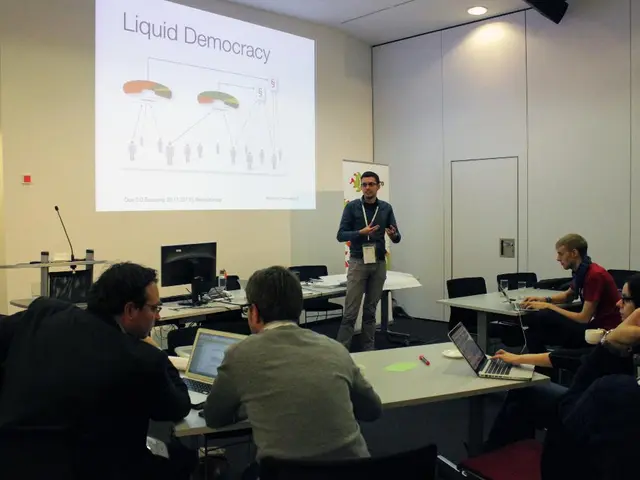Cross-border trade between the U.S. and China receives temporary reprieve from customs disagreement.
In the ongoing US-China trade saga, the focus has recently shifted from tariffs to more complex issues, such as agricultural market access and intellectual property protections. These negotiations, aimed at resolving technical issues related to tariff suspension mechanisms, improving China's market access for US agricultural products, and strengthening IP protections, have been the centre of discussions since May [1].
The latest round of talks took place in Stockholm in late July, where delegations from both nations met, but without reaching a final agreement [1]. Despite this, China has shown signs of rapprochement, with a commentary in the state-run "People's Daily" stating that Beijing is ready to achieve substantial progress with Washington [2].
The negotiations have been taking place in a pragmatic but cautious environment, aiming to stabilize supply chains amid ongoing geopolitical and economic tensions [1]. The key negotiation points include facilitating US agricultural exports to China, enhancing enforcement and protection regimes for intellectual property, and establishing technical rules on tariff suspension mechanisms [1].
Other trade topics, such as market access for different goods and technical rules around imports, continue to be discussed. However, no formal deal on these broader trade issues has been finalized as of August 2025, with tariff truce extensions providing temporary relief but leaving detailed compromises pending [1].
In addition to these negotiations, tensions between the US and China extend beyond tariffs. Peking has criticized US export controls on semiconductors and AI chips as hindrances to Chinese companies' access to modern technology [3]. In response to US tariffs, China has imposed retaliatory tariffs of up to 125 percent and export controls on strategically important raw materials [4].
The US President, Donald Trump, has been actively involved in these negotiations. He signed a decree for the further postponement of the tariffs until November 10, 00:01 (Washington time) [5]. The US government collects a 15% share of sales of AI chips from American companies Nvidia and AMD to China, a fact Trump confirmed on Monday [6]. Initially, Trump demanded 20% from Nvidia CEO Jensen Huang "for the country" [6].
Despite these challenges, both nations continue to engage in talks to address imbalances in trade. The US intends to continue negotiations with China to find a lasting solution to the trade impasse [7]. The next round of talks is expected to provide further insights into the direction these negotiations will take.
[1] Source: Reuters, August 2025 [2] Source: People's Daily, August 2025 [3] Source: South China Morning Post, August 2025 [4] Source: Bloomberg, August 2025 [5] Source: White House Press Release, August 2025 [6] Source: Truth Social, August 2025 [7] Source: CNBC, August 2025
- The US-China trade negotiations have expanded to include various aspects of business, such as facilitating US agricultural exports, enhancing IP protection regimes, and establishing technical rules on tariff suspension mechanisms.
- The ongoing trade discussions between the US and China extend to other industry sectors, including criticism from Peking about US export controls on semiconductors and AI chips, which China deems as obstacles to accessing modern technology.
- The trade impasse between the US and China is not confined to tariffs but also involves complex issues in the realm of politics, as evidenced by Chinese retaliatory tariffs on strategically important raw materials and the US President's demands for a share of sales from American tech companies operating in China.




